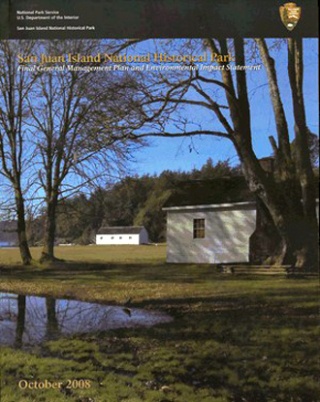A proposed new year-round visitor center at American Camp and the expansion of the English Camp boundary are among the highlights included in San Juan Island National Historical Park’s General Management Plan and Environmental Impact Statement released last week.
Copies of the plan are available at park headquarters, 650 Mullis St., Suite 100, Friday Harbor; and at the American Camp Visitor Center, 4668 Cattle Point Road. Electronic copies may be accessed via the park Web site, www.nps.gov/sajh; or the park planning Web site, http://parkplanning.nps.gov/sajh.
To read the plan, click here
In the development stage for more than six years, the document also identifies trails, programs and natural and cultural resource projects that will unite the park’s historical and natural themes, according to park superintendent Peter Dederich.
“This GMP essentially directs how the park will managed over the next 15 to 20 years,” Dederich said. “And that required guidance from San Juan Island residents and the general public. It was one of the keys to helping the park staff understand all the ramifications of any actions we might propose.
Three well-attended public meetings were held in February, during which the park received more than 100 verbal comments. During the ensuing 60-day comment period, 30 letters were received noting issues and ideas. The meeting comments and letters resulted in a number of revisions to the final plan, Dederich said.
Of the three alternatives outlined in the draft plan, the approved Alternative C provides a strong framework that builds on the inseparable relationships between the park’s rich cultural heritage and the natural resources, Dederich said. That plan includes, in addition to a new visitor center, continuing efforts to add to the park’s English Camp the 312 acres of state Department of Natural Resources land on Mitchell Hill, enhanced interpretation programs that address history and nature as one, preservation of English Camp’s Garry oak woodland and prairie restoration at American Camp.
“As our visitors and park neighbors already know, this national park is composed of several, distinct natural environments, some of which, such as the native prairie at American Camp, are nearly extinct in the Pacific Northwest,” Dederich said. “This plan will help us restore and/or maintain them while developing new trails, facilities and programming that enhance visitor understanding.”
San Juan Island National Historical Park was authorized by an act of Congress on Sept. 9, 1966 (Public Law 89-565) to commemorate the peaceful resolution of the Northwest Boundary Dispute (the so-called Pig War) and the 12-year peaceful joint military occupation of San Juan Island from 1860 to 1872.
The last general management plan (GMP) was completed in 1979. Many changes have occurred since this time. Patterns and types of visitor use have changed, Dederich said. San Juan County is one of the fastest growing counties in the state. More than 250,000 annual park visitors have been recorded at American and English camps.
“This growth in local population and visitation has implications for management of the park’s resources,” Dederich said. ”As the population of the island has grown and the island has become more developed, the park has become an important refuge for natural resources such as prairie and Garry oak woodlands. Water has become a precious commodity.”
Each of these changes has major implications for how visitors access and use the park and the facilities needed to support these uses, how resources are managed, and how the National Park Service (NPS) manages its operations, he said. This plan provides the overall context within which more detailed plans may be developed, Dederich said.




